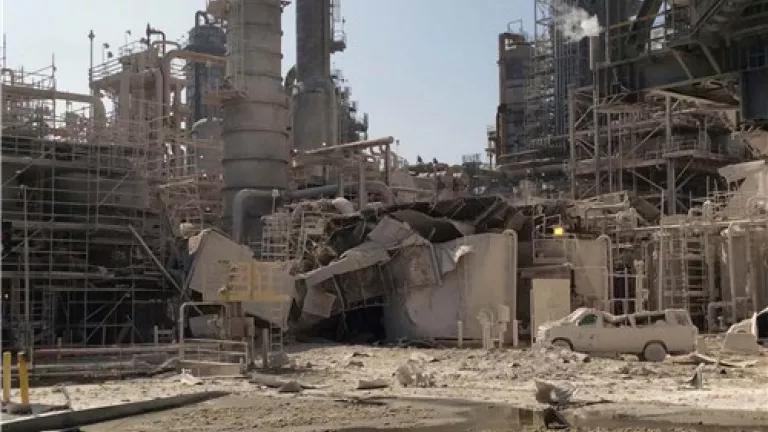California’s Oil Addiction Is Increasing its COVID-19 Risk

The communities living near California’s oil industry operations already have a huge lot of health risk on their plate. Repeated studies over the years have shown that proximity to oil and gas production increases the chances of multiple poor health outcomes, from respiratory impacts to cancer to birth defects. Air quality in the San Joaquin Valley, in the heart of California’s oil drilling country, is literally the worst in the nation. And oil refinery communities have not only suffered the consequences of repeated accidents—like the 2012 Chevron Richmond refinery fire that sent 15,000 people to local hospitals with respiratory distress—but are day in and day out breathing the high levels of air pollution emitted in the process of refining the heavy and dirty crude that California produces.
As if that weren’t enough for these communities to deal with, it now appears that some of the air pollution assailing them may also be putting them at greater risk of death from COVID-19. New research by leading air pollution epidemiologists at Harvard (still undergoing peer review) demonstrates that long-term exposure to even slightly increased levels of fine particulate matter air pollution measuring less than 2.5 microns—or PM2.5—are associated with significantly higher COVID-19 death rates. The research, explained in greater depth by my NRDC Science Center colleague Vijay Limaye, controlled for important variables like smoking rates, population density, and income levels.
PM2.5 air pollution is generated at significant levels by both oil production and refining. Oil production involves use of heavy diesel-powered equipment on site as well as extensive truck traffic, both of which generate fine particulate matter—one of the air pollutants currently contributing to the San Joaquin Valley’s horrific air quality. Indeed, that’s one of the many reasons NRDC is supporting AB 345 by Assembly Member Muratsuchi, which would require a health and safety buffer zone, or “setback,” from oil and gas production facilities. Refining – particularly refining of the heavy crudes produced in California—generates significant levels of PM2.5 air pollution as well, with the communities in their immediate vicinity bearing the brunt of the health damage. Scientific analysis conducted several years back in connection with a proposal to limit emissions at Bay Area refineries concluded that mortality risk associated with PM2.5 is 8 to 12 times higher within 2.5 miles of a refinery as compared to the Bay Area as a whole.
To make matters worse, the oil industry-related PM2.5 air pollution burden, and its attendant increased COVID-19 risk, falls disproportionately on people of color in California. Multiple studies over the years, and NRDC’s analysis, have shown that pollution from oil production and refining in California hits these communities the hardest. In 2010, an analysis of California’s racial disparities in particulate matter air pollution burden concluded that fully 93 percent of that disparity is attributable specifically to oil refineries, which inflict a disproportionately heavy pollution burden on populations of color.
This disparity has always been unacceptable, but it is doubly so now. It should not take a global pandemic to make us realize that an industry that disproportionately sickens the most vulnerable Californians is not our state’s future. It’s time for us to do better. Many bold steps will be required down the road to deal with the human and economic toll of the current crisis, and one of those steps should be breaking our state’s addiction to an industry that is actively harming us.

